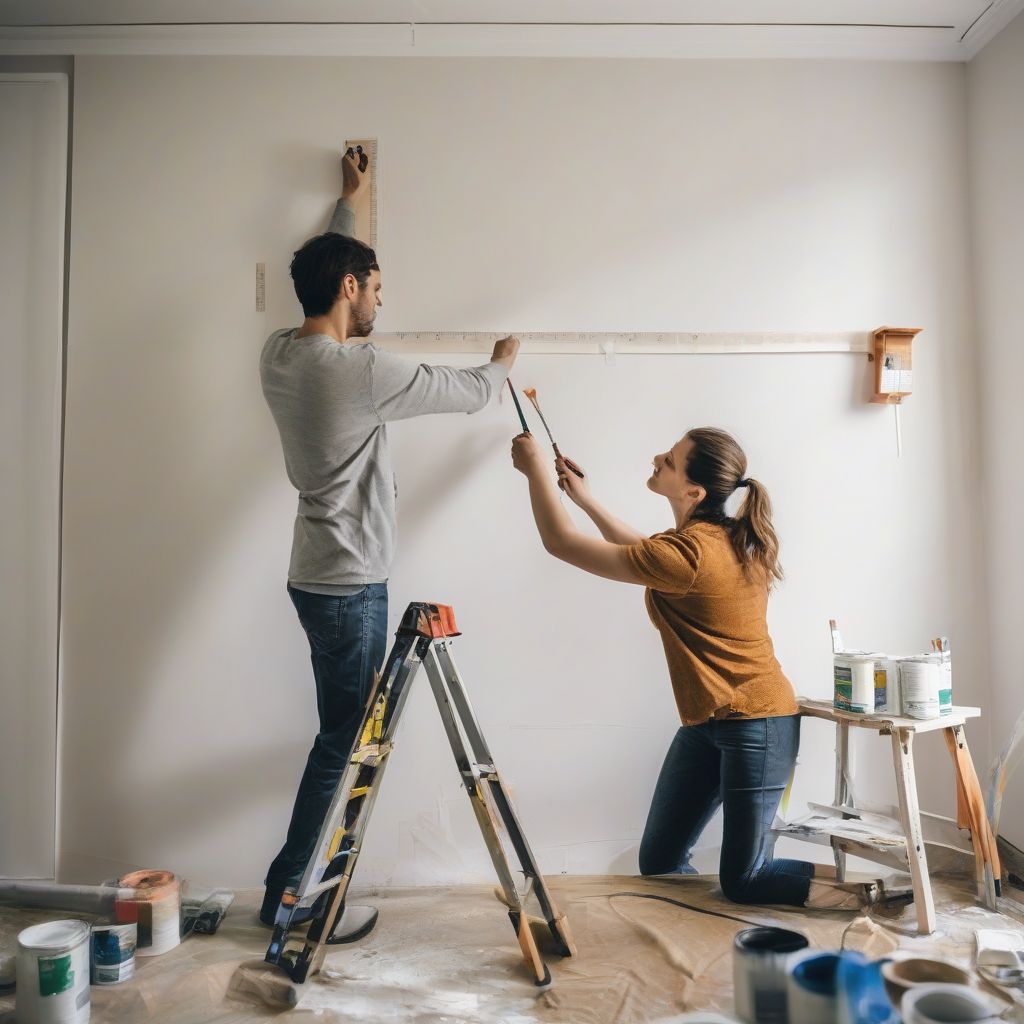Have you ever walked into a beautifully renovated room and thought, “I wish I could do that”? Well, you absolutely can! Taking on your first DIY home project can feel daunting, but with the right preparation and mindset, it can be an incredibly rewarding experience. This guide will walk you through everything you need to know to start your first DIY home project with ease, transforming your home and boosting your confidence along the way.
Planning Your DIY Project: The Foundation for Success
Just like a nutritious meal plan sets you up for healthy living, a well-thought-out plan is crucial for a successful DIY project. Don’t jump into demolition just yet! First, ask yourself these key questions:
Defining Your Scope and Budget
- What do I want to achieve? A fresh coat of paint? A complete kitchen remodel? Be realistic about your skills and available time. Starting small, like repainting a small room or building a simple bookshelf, is often the best approach for beginners.
- What’s my budget? DIY projects can range from incredibly affordable to surprisingly expensive. Set a realistic budget and stick to it. Research the cost of materials, tools, and any potential professional help you might need.
Gathering Inspiration and Resources
- Where can I find inspiration? Browse websites like Pinterest and Houzz for ideas. Check out home improvement magazines and TV shows for inspiration. Consider the style of your home and choose a project that complements it.
- What resources do I need? Make a detailed list of all the necessary materials and tools. This will help you stay organized and avoid unnecessary trips to the hardware store mid-project.
Choosing the Right Project: Start Small, Think Big
For your first DIY project, choose something manageable and within your skillset. A “simple” paint job can be incredibly satisfying and teach you valuable skills for future, more complex projects. Consider these beginner-friendly options:
Beginner-Friendly DIY Projects
- Painting an accent wall: This is a great way to add a pop of color and personality to a room without committing to painting the entire space.
- Building a raised garden bed: Enjoy fresh herbs and vegetables with a DIY raised garden bed. It’s a relatively simple project that can enhance your outdoor space.
- Installing floating shelves: Add extra storage and style with easy-to-install floating shelves. They’re perfect for displaying books, plants, or decorative items.
- Updating cabinet hardware: A simple hardware swap can make a big difference in the look of your kitchen or bathroom. Choose new knobs, pulls, or handles that complement your existing décor.
“As a certified nutritionist, I understand the importance of starting small and building up gradually. The same principle applies to DIY projects. Start with a manageable project to build your confidence and skills before tackling larger, more complex endeavors,” says Jane Doe, Registered Dietitian.
 Starting Your First DIY Home Project
Starting Your First DIY Home Project
Equipping Yourself for Success: Tools and Materials
Having the right tools for the job is just as important as having the right ingredients when preparing a healthy meal. Here are some essential tools to get you started:
Essential Tools for Beginners
- Measuring tape: Accurate measurements are critical for any DIY project. Invest in a good quality measuring tape and learn how to use it correctly.
- Hammer: A versatile tool for everything from hanging pictures to light demolition.
- Screwdriver set: Choose a set with a variety of sizes and head types to handle different screws.
- Level: Ensure your shelves and picture frames are perfectly straight with a reliable level.
- Safety gear: Protect yourself with safety glasses, gloves, and a dust mask.
Executing Your Project: Step-by-Step Guidance
Once you have your plan, materials, and tools, it’s time to get started! Follow these steps to ensure a smooth and successful project:
Step-by-Step Project Execution
- Preparation is key: Clean the area, cover furniture, and protect flooring. This will save you time and effort in the long run.
- Follow instructions carefully: Whether you’re following a tutorial or a product manual, read the instructions thoroughly before beginning.
- Take your time: Don’t rush the process. Rushing can lead to mistakes and potentially dangerous situations. Enjoy the journey!
- Don’t be afraid to ask for help: If you get stuck, don’t hesitate to ask for help from a friend, family member, or even a professional.
“Remember the adage ‘measure twice, cut once.’ This is particularly true in DIY projects where precision is essential. Taking the time to plan and measure accurately can prevent costly mistakes and rework,” notes John Smith, author of “The DIY Handbook.”
Celebrating Your Accomplishment: Enjoying the Fruits of Your Labor
Completing your first DIY project is a significant achievement. Take a step back and admire your handiwork. Not only have you improved your home, but you’ve also gained valuable skills and confidence.
Remember those links I promised? Check out these resources for more budget-friendly DIY inspiration and other related topics:
Conclusion: Embracing the DIY Spirit
Starting your first DIY home project can be an enriching and empowering experience. By following these tips, you can transform your home, one project at a time, while building your skills and confidence. Remember to start small, plan carefully, and enjoy the process. Now go forth and create! Share your experiences and tips in the comments below—we’d love to hear about your DIY journey. What projects are you excited to tackle next? Let us know!



